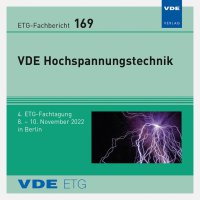Electric-field distributions in plate specimens under HVDC stress — derived from space-charge profiles probed by means of LIPPs
Konferenz: VDE Hochspannungstechnik - 4. ETG-Fachtagung
08.11.2022 - 10.11.2022 in Berlin, Germany
Tagungsband: ETG-Fb. 169: VDE Hochspannungstechnik 2022
Seiten: 7Sprache: EnglischTyp: PDF
Autoren:
Roesch, Felix; Gerhard, Reimund; Plath, Ronald (Technical University of Berlin, Germany)
Inhalt:
The demand for HVDC cable connections is increasing. While first-generation polymeric HVDC cables and their accessories are already installed and put into operation – or are about to be installed –, the development of second-generation HVDC accessories has started. Besides other materials, suitable silicone-rubber compounds may offer improvements as insulation in accessories when compared to first-generation systems, due to their favourable inherent materials characteristics. For evaluating the suitability of HVDC-accessory insulation materials, not only the temperature- and fielddependent conductivity, but also the space-charge behaviour and its influence on the electric-field distribution must be studied. In order to compare different insulation materials, the maximum space-charge-induced field enhancement over the Laplacian field (insulation without any space charge) is often assessed. To achieve robust experimental results for a comparison between different insulation materials, the determination of the electric-field distribution on the basis of space-charge measurements must be reliable and as accurate as possible. Deviations due to systematic errors should be known in advance so that appropriate corrections are possible. Here, we describe the determination of electric-field distributions in plate specimens on the basis of space-charge measurements by means of Laser-Induced Pressure Pulses (LIPPs). Procedures for converting LIPP signals into space-charge density distributions and for then calculating electricfield profiles are described in detail. Estimates of the systematic errors are given where all relevant elements in the measurement chain are considered. The overall procedure has been tested on typical experimental data.


